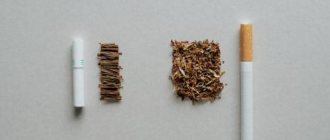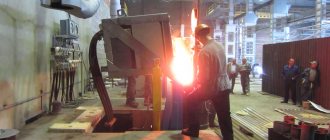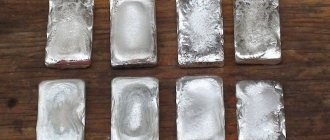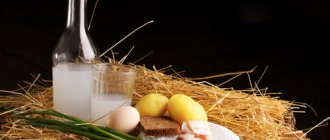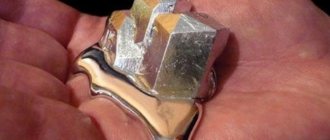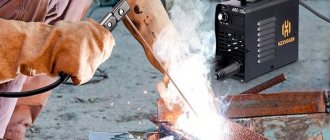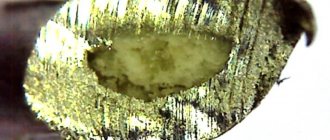At what degrees does moonshine burn? This question is of interest, perhaps, only to those distillers who do not have specific experience in the production of alcohol. But experts know exactly when moonshine starts to burn and why this happens.
There are several ways to determine the alcohol concentration in moonshine, including going through a “test by fire.” It is set on fire using matches or a lighter, in this way determining not only the strength, but also the taste of the distillate produced at home.
Why check the burning temperature of alcohol? What determines the degree of combustion of alcohol?
Igniting alcohol (more precisely, the vapor of the alcohol it contains) is a reliable way to test its quality. Using this method, alcoholic drinks are tested for properties such as:
- concentration of ethyl alcohol. The degree of alcohol combustion directly depends on this indicator. The higher the strength of the drink, the brighter and longer the flame burns;
- presence of methyl alcohol. The flame from the combustion of methyl alcohol has a characteristic green color;
- presence of foreign impurities (fusel oils). This indicator is determined by the liquid remaining after the alcohol vapor burns out.
The method remains relevant today, when the risk of purchasing a diluted counterfeit, low-quality or deadly drink has increased significantly.
Units for measuring the strength of alcoholic beverages: degrees, percent, revolutions, ABV, proof
Strength is the content of anhydrous (pure) ethyl alcohol in an alcoholic drink. The alcohol concentration can be calculated by two methods - by mass and by volume, but since the mass of the liquid is not equal to its volume, the results will differ. This causes confusion among consumers, and different labels make matters worse. Depending on the country and manufacturer, strength can be expressed in degrees (°), percent (%) and proof.
In Russia, since the times of the USSR, degrees have traditionally been used to indicate the concentration of alcohol by mass. In this case, a degree is one hundredth (0.01) part of anhydrous (100%) alcohol, which weighs 7.94 grams. On the bottle label there is a number with a small circle, for example 40° or 45°. This is the most accurate metric, but in the 70s of the 20th century, when the export of vodka to capitalist countries began, in the USSR, along with the domestic system, they began to use Western markings of strength - as a percentage. The problem is that the percentages themselves can be calculated both by volume and by mass, so without additional indication of the calculation method they do not make sense
The disadvantage of measuring by volume is that differences in the weight of water, alcohol and other substances in the composition of the drink are not taken into account, and the degree of purification of the alcohol is also not taken into account
The strength in degrees is greater (the concentration of ethyl alcohol is higher) than the strength in percent by volume. If 1 liter of 40° vodka contains 572 g of water and 381 g of alcohol, then the same amount of vodka contains 40% vol. there will be 635 g of water and 318 g, which corresponds to approximately 35°.
There is no universal formula for converting volume fractions into weight fractions that could be applied to all alcoholic beverages, since in addition to water and alcohol, other substances in the composition must be taken into account: sugar, acids, tannins, fusel oils, etc., and their concentration is always different.
In the Russian Empire, before the invention of the hydrometer (a device for determining the concentration of alcohol in an aqueous solution), the strength of alcoholic drinks was measured by ignition - the tested alcohol was poured into a special measuring ladle, set on fire and waited for the flame to go out. Then they looked at the volume of remaining liquid. If about half has burned out, then the drink has passed the test.
The alcoholometer is intended only for measuring the strength of an alcohol-vodka mixture; the device is not suitable for beer, wine, whiskey and cognac
In America and Britain they used a faster method of quality control. In the Wild West, sellers soaked gunpowder in alcohol and set it on fire. If the mixture ignited, the high strength of the drink was considered proven - proof (translated from English as “proof”). The approximate alcohol strength at which gunpowder ignites is 50% vol., and on the American scale this is equal to 100 proof (“proof”), that is, one hundred percent proof of quality.
The same method was used by sailors in the British Navy when they checked whether their legal portion of rum was too diluted with water. However, “British proof” (Br. proof) is equal to 57% by volume, since diluted rather than pure alcohol is taken into account, and a gallon is taken per unit volume instead of a liter. To convert the “British proof” into volume percentages, a coefficient of 1.75 was used. This means that 40% vol. = 70 Br. proof (40 × 1.75 = 70). In 1980, Britain moved to specifying alcohol strength by volume, joining all other European countries, and Br. proof has become history.
Proof is mainly used by manufacturers from the USA, paying tribute to tradition. However, on all bottles of American alcohol that are exported, along with “proofs”, “turnovers” (% vol.) must be indicated, since this is an international standard. The ABV marking can be found on foreign beers, often it is also duplicated by percentage by volume.
Your mark:
At what degrees does alcohol burn?
Ethanol or ethyl alcohol in its pure form is a flammable liquid, the strength of which is 94-95 degrees. Easily ignites at a temperature of 18 degrees. It can burn even at low temperatures (in case of evaporation).
It is the process of evaporation of alcohol vapor from the surface of the liquid that causes the combustion of all strong alcoholic drinks.
The ethanol combustion process has the following characteristics:
- alcohol burns quickly;
- the flame is strong and stable;
- extinguishing the flame is difficult.
Simple ways to distinguish ethyl and methyl
The easiest way to determine methyl alcohol in alcohol is to immerse peeled potatoes in liquid. If the potatoes turn pink within half an hour, it is likely that they have been in contact with methanol. If no color change occurs or the potatoes turn blue, the alcohol contains a certain percentage of ethyl.
You can distinguish methyl alcohol from ethyl alcohol using potassium permanganate. At home, alcohol is poured into a container that can be heated. Add a little potassium permanganate and heat to 18 degrees. Next, you need to record the time of change in the color of the liquid. It can be colored from purple to yellow-pink. The test is considered passed, and the container contains alcohol and ethanol, if discoloration is detected no earlier than 10 minutes.
Among other, no less simple ways to distinguish methanol from ethanol, the following experiments can be noted:
- The difference between ethyl versions of alcohol and methanol alcohol can be seen if the liquid is heated. Technical alcohols have a lower boiling point. That is, in the methyl version you can find boiling at 64 degrees, and ethyl alcohol needs a higher temperature, about 78 degrees.
- When discussing the difference between ethyl alcohol and methyl alcohol, we cannot forget about the school experiment with chemistry. A heated copper wire is immersed in a cold liquid. If during the copper reaction you smell rotten apples or detect the smell of vinegar, then the wire has been in contact with ethyl alcohol. The difference is felt almost immediately when the same copper wire is dipped into a container of methyl-based alcohol. There will be a pungent odor of formaldehyde.
- Chefs know how to determine ethyl alcohol; they add a little baking soda to the liquid; if an insoluble thick yellow sediment appears at the bottom, then the soda was dipped in ethyl. Dipping soda into methylene liquid, the precipitate will be white or transparent.
- You can distinguish methyl using potassium permanganate; if you add a small amount of it while the liquid is boiling, the difference will be that ethyl does not form bubbles, but methyl does.
Whichever of the above methods for determining alcohols you choose, remember that they do not provide a 100% guarantee. Laboratory staff can accurately distinguish what substance your drink is filled with by carrying out chemical reactions.
If you want to maintain your health for a long time, it is better to completely stop drinking strong drinks, and not look for the difference between “bad” and “even worse.” There is not much difference between intoxicants; ethyl kills a person slowly, destroying internal organs, while methyl is distinguishable in that it kills instantly. In both the first and second alcoholic drinks, death awaits, remember this, and lead a healthy lifestyle.
At what degrees does vodka burn?
Practice shows that a barely noticeable combustion process of vodka begins if its strength is 38 degrees. Real flames can be observed in drinks with a strength of over 40 degrees.
Why doesn't vodka burn?
The lack of combustion of vodka can be caused by the following reasons:
- insufficient alcohol concentration. An obvious indicator of poor product quality, because the strength of vodka according to standards cannot be lower than 38 degrees;
- low temperature of the drink. To burn alcohol vapor, a temperature of 23 degrees and above is required;
- the surface of the vessel chosen for the experiment is not wide enough. This circumstance greatly impedes the flow of oxygen necessary during the combustion process.
How to set fire to vodka?
To carry out the experiment you will need:
- warmed vodka;
- a vessel with a wide surface (spoon, lid, saucer);
- matches or lighter;
- room at room temperature.
Having prepared everything you need, all that remains is to set fire to the vodka and observe.
What you should pay attention to during the experiments:
- vodka, even high-quality one, does not light up quickly;
- the combustion process occurs only at the surface (after all, it is not the drink itself that burns, but the alcohol vapors released by it);
- A very small amount of heat is released;
- a normal flame is light blue; if other shades are noticeable (especially green), the drink may be life-threatening due to the presence of methyl alcohol in it;
- the intensity of the color and flame depends on the concentration of alcohol contained in the vodka; at low concentrations the flame will be faint and will go out quickly.
Expert opinion
Irina Kvazarova
Alcohol production technologist
After the fire dies out, the remaining liquid should ideally be clear and free of unpleasant odors. If an oily liquid remains, it means that the vodka contains a lot of fusel oils.
Curious facts about testing vodka for strength
Regardless of preference, you must remove the first portion from the drink. It has a strength of about 80-90% vol. The liquid contains acetone and methyl alcohol. Both compounds pose health risks and evaporate at relatively low temperatures. Despite the high strength, the liquid is drained, since drinking moonshine with “heads” is undesirable.
Additionally, the “tails” - the last portion - are not evaporated from the mash. Aldehydes and fusel oils boil at high temperatures. Their content depends on the raw materials used. Sugar mash contains fewer harmful substances, but this product is considered to be of lower quality. Fusel oils are in most cases less dangerous than acetone and methyl alcohol, but they do cause side effects. The strength of the last stream is less than 40% vol.
It is difficult to give a definite answer to the question of how many degrees moonshine contains. Depending on the initial raw material, the alcohol concentration at the outlet, subject to the preparation rules, is 55-80%, but such a drink must be diluted. Most manufacturers prefer moonshine with a strength of 40-45% vol. It is believed that such drinks are better absorbed by the body and are less likely to cause a severe hangover.
Some people prefer to leave a high alcohol concentration - 55-70%. Drinking such drinks may cause burns. In Europe, the strength of drinks rarely exceeds 40% vol. If you are planning a feast with foreigners, it is advisable to reduce the ethanol concentration to 38%.
At what degrees does moonshine burn?
Having a strength of 40 degrees or more, moonshine burns evenly and continuously, the color of the flame is blue. If the degree of the drink is below 40, then the flame is weak, intermittent, periodically almost goes out and rises again. If the temperature drops significantly (below 30), the moonshine will not burn at all.
Setting fire to the moonshine, evaluate:
- degree of combustion;
- odor emitted during combustion (a strong unpleasant odor is produced by the drink, which is dangerous for consumption).
Use this method in the following cases:
- to ensure quality when purchasing (especially from hand): check the concentration, the absence of methyl and third-party impurities;
- to determine the need for a second distillation;
- before preparing certain dishes whose recipes are based on frying using an alcohol flame.
Homemade alcoholic drinks
In our country, the population consumes not only drinks that are sold in stores. After all, in order not to worry about how many degrees there are in vodka, you can produce it yourself. This is exactly what many of our craftsmen do, delighting their guests with delicious tinctures and liqueurs.
Homemade alcoholic drinks come in different strengths. To understand how many degrees there are in the liqueur, vodka, or rather information about its strength, will not be enough. Some specialists are able to make a liqueur from ordinary forty-proof vodka in combination with berries and herbs that will have fifty degrees of strength. It all depends on the age of the drink, additives and, of course, the recipe. And quite often it is kept secret by several generations of one family.
Does wine burn?
The strength of traditional wines does not reach the 30-degree mark, which means that the wine will not burn under normal conditions. You can achieve the wine flame only:
- if you heat the drink very much (you will be able to “squeeze out” a small flame);
- by including wine in a fiery cocktail.
How to measure strength by weighing?
This check can only be carried out if you have electronic scales . First you need to weigh the container (or put it on the scale plate, turn it on, and it will show 0). Pour exactly 1 liter of moonshine into this container. A measuring cup will help you measure this amount, most of which cannot claim absolute accuracy. And look at the scale readings.
A liter of vodka with a strength of 40° weighs exactly 953 grams ! If it is less, the strength is higher (alcohol is lighter than water), the weight is greater - accordingly, the strength is lower. Yes, you’ve probably noticed yourself: when you pick up a three-liter jar of high-proof moonshine, you feel its unusual lightness.
Read also: Law on smoking in hospitals
Does cognac burn?
Should cognac burn? There is an opinion that noble cognac may not burn, explaining the phenomenon by the peculiarities of production. It’s as if the drink, aged in oak barrels for several years, absorbs tannins that prevent ignition. In fact, this statement is false. All alcoholic drinks burn above 30 degrees. Cognac spirits, the concentration of which should be about 40%, burn with an even blue flame.
Cognacs of various brands are often used as the basis for flaming cocktails.
The main stages of intoxication
Alcoholic drinks have complex effects on the human body. The more a person consumes alcohol-containing products, the worse he becomes. He loses control over himself, does not remember what actions he commits. Aggressiveness and bad mood are the companions of those who usually overdo it with alcohol.
Read more Sample claim for division of an apartment after divorce
Experts distinguish three stages of intoxication, each of which has its own characteristics:
- mild intoxication . There is no more than 1.5 percent alcohol in human blood. This stage is characterized by high spirits, relaxation, and the ability (as it seems) to solve any difficulties. Minus – loss of concentration, the ability to 100% control your words and actions;
- middle stage . There is up to 2.5% alcohol in the blood. A person's mood changes for the worse. He is irritating, rude to others, and cannot control coordination. The pain threshold decreases, so people often get injured at this stage;
- severe degree . The alcohol content in the blood can exceed 3%. Signs of severe intoxication include speech disorders, spatial disorientation, inexpressive facial expressions or its complete absence. Such intoxication is fraught with problems with the heart, respiratory and digestive systems.
If the alcohol level in the blood exceeds 3%, then the person is in mortal danger. The fourth stage of intoxication with alcoholic beverages causes severe poisoning, complete intoxication of the body, which is very difficult and sometimes impossible to cope with.
Effective burning of alcohol when preparing cocktails
Fiery cocktails have been in fashion for a long time. Preparing and drinking burning drinks is a fascinating spectacle and gives indescribable sensations.
It was noticed that during the combustion process:
- the taste and aroma of the cocktail improves;
- the temperature of the drink increases;
- The mood of partygoers increases.
Fire cocktails, like any other, contain several components. And only one, or less often two of them are flammable. To prepare such cocktails, experts advise using drinks with a temperature of 40 degrees or higher as a basis. The higher the degree, the more spectacular the spectacle will be. You can use less strong ingredients, but then they must contain sugar.
When creating such cocktails yourself, it is important to provide safety measures in advance and strictly follow them.
If you doubt the properties of the purchased drink and know the characteristics of the combustion of alcohol, it is worth conducting a simple experiment. Conducting an experiment is not only an exciting activity, but also confidence in the safety and quality of the product.
Absinthe
First you need to set fire to ice-cold absinthe. Then put a piece of sugar on a special spoon and hold it over the burning alcohol. The sugar will begin to melt and drip into the glass, crystallizing at the bottom. When the number of round brown crystals fills the remaining fifth of the glass, remove the spoon with sugar. Prepare a cocktail tube.
Blow out the flame and immediately, lowering the straw into the glass, without stopping, drink through it all the liquid contents of the glass in a few quick large sips, making sure to pass it all over your tongue in order to feel the taste more deeply. If everything is done quickly and correctly, the sharp transition from the scaldingly icy absinthe at the bottom to the unbearably hot on the surface, accompanied by a pleasant sweetish aftertaste, will become one of the most unforgettable sensations that you will want to experience again and again.
Undoubtedly, burning cocktails are an exciting and aesthetically pleasing sight. But the first and most important thing to always remember is safety precautions. It’s not for nothing that there is an expression: “If you like to drink absinthe, you also like to wear wigs.”
Azaleptin as a cause of death due to alcohol consumption
A drug that is dispensed from pharmacies with a doctor's prescription. It is an antipsychotic that has a sedative effect. Its cost in pharmacies varies from 300 to 500 rubles per package. These tablets have a calming effect, a hypnotic effect, and also enhance the effect of painkillers. The peculiarity of this drug is that it enhances the effect of alcohol.
Heavy drunkards sometimes resort to its help in order to increase intoxication, since they cannot achieve the desired state only with the help of alcohol. The danger is that it is not recommended to use it with ethanol, as the consequences of overdose and poisoning may occur. Nausea, vomiting, coma, aggressive states, loss of consciousness.
Taking it with alcohol is life-threatening, but this does not stop alcoholics
Bone marrow dysfunction may occur. This combination suppresses bone marrow function and production. Which leads to death. Death from alcohol occurs when the concentration of ethanol in the blood is high, 5–7 ppm. A similar state is achieved by different people at different times and from different volumes of alcohol. This is due to the characteristics of the body, the habits of drinking often and overusing it or not drinking at all.
The hereditary factor also plays a role. Death from alcoholism is the most common cause of death. The problem develops gradually. Death usually occurs from attacks: heart attack, stroke, pancreatitis. In Russia, about 50% of all cases among the male population are associated with mortality from alcoholism.
